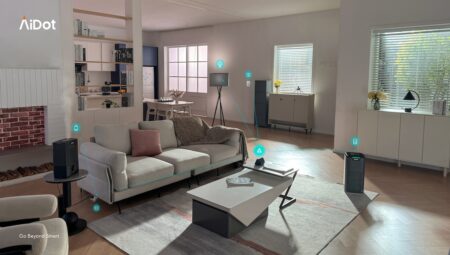Everything you need to know about setting a Sonos multi-room speaker system
Sonos is still the biggest name in multi-room audio. While Amazon’s Echo range, Apple’s HomePod and Google Assistant-ready speakers may have added some much-needed mainstream competition, Sonos is the go-to option for anybody trying to organize a multi-room speaker setup for their homes.
Luckily, Sonos is really simple to get started with – whether you want one speaker, a stereo-pair, TV surround sound or in-sync speakers in various rooms. The array of playback options is also staggering – think local storage, streaming services, internet radio, TV audio and more.
Cost-wise, there are certainly better-priced options, but you’re getting what you pay for in terms of performance with Sonos.
And though it has previously lacked in terms of smart support previously, especially when compared to its dedicated smart speaker rivals, this is an area where it’s continuously improving.
Plenty of Sonos speakers now come with Alexa built-in (as well as a native Sonos voice assistant), as well as access platforms like AirPlay and Spotify Connect.
Sonos even has a few of Bluetooth speakers in its line-up now; something you would have never believed a few years ago, and there are even rumors of some Sonos headphones landing in the near future.
Once you get on board with Sonos and start setting up your own system, you’ll be flying. However, it can be daunting trying to figure out which are the best Sonos speakers to invest in and what the best Sonos setup is.
With this guide, we’ve got you covered. Read on to learn about every speaker in the Sonos range, as well as everything you need to know about creating the ultimate multi-room system in your house.
The best Sonos speakers for your setup
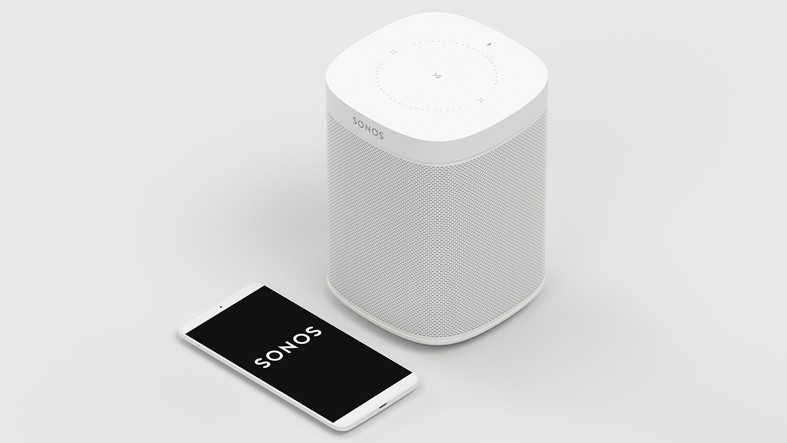
Sonos One (2nd-gen)
Buy now: Amazon, sonos.com | $219 / £199
The Sonos One is the entry-level Sonos product in the ecosystem. It’s not actually the cheapest mains-powered Sonos speaker – the SL is – but it is the cheapest if you want Google Assistant or Alexa integration.
You can also control your non-Alexa Sonos speakers through your Echo devices, but the One has the smart assistants built in, i.e. you can use it to control your lights, locks and the like, as well as ask for Alexa or the GA’s help with various digital tasks. It’s also an AirPlay 2 speaker, so it can be grouped up with HomePods and other AirPlay 2-enabled speakers.
In 2019, Sonos refreshed the One with the Gen 2 model: differences include a faster processor and more memory – and the addition of Bluetooth Low Energy, making it easier to set up the speaker initially.
- Read our full Sonos One review
- Sonos One vs Sonos Move

Sonos One SL
Buy now: Amazon, sonos.com | $199 / £179
The Sonos One SL replaced the Play:1 and is essentially a Sonos One without the smart assistants. In fact, it’s barely distinguishably from its smarter twin, with only the lack of microphones the giveaway here.
Who is this for? Anyone who wants the cheapest “in” to the Sonos ecosystem but also doesn’t care or want Alexa or Google Assistant. Maybe you don’t like the idea of putting microphones in your home. Maybe you just don’t care about that stuff.
The One SL is a bookshelf Sonos product that’s ideal for bedrooms, offices, kitchens and the like. It’s a powerful little speaker on its own but it also works brilliantly in a larger room, paired up to form a duo of stereo speakers.
More than Sonos’ mic drop, the SL offer plenty of audio bang for its buck, with two Class-D digital amplifiers, a tweeter for clear high-frequency response and a mid-woofer for mid-range vocal frequencies. It’s also cheaper than the One, obviously.
- What’s different: Sonos One v One SL
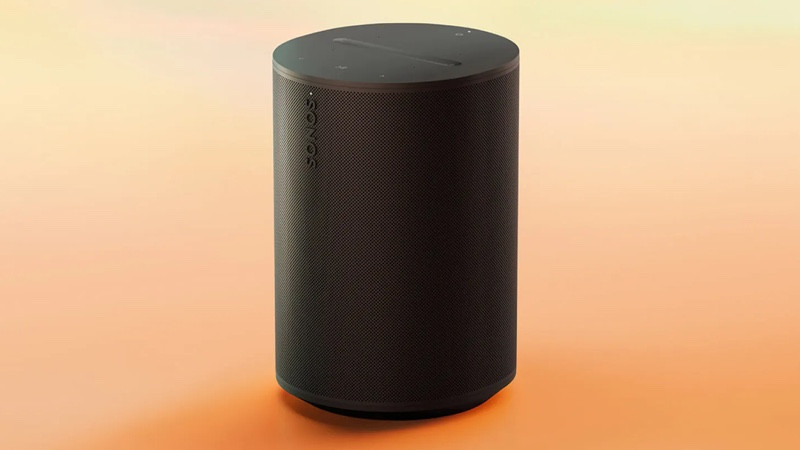
Sonos Era 100
Buy now: sonos.com | $249/ £249
There’s no official word from Sonos to confirm this but, let’s face it, the Era 100 is the Sonos bookshelf speaker that will eventually kill the One and the One SL.
It’s a bit pricier but is still very much ‘entry-level’ for a Sonos speaker designed to live in your house.
It boasts two tweeters, angled at 270 degrees for stereo imaging, and boast a load of extra bass compared to the One.
It is both Bluetooth and Wi-Fi 6E compatible and offers Android users a Quick Tune option that optimises the sound of the Era duo with just a single button push… iPhone users have been able to use TruePlay for years, of course.
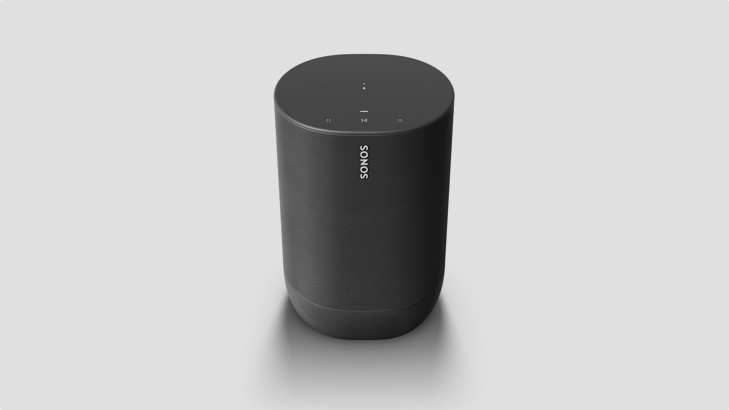
Sonos Move
Buy now: Amazon, sonos.com | $399 / £399
Sonos finally built a Bluetooth speaker a couple of years back, bringing its expertly-tuned sound to the great outdoors. And it sure as hell wants you to know about it – the Sonos Move is loud.
It’s also a speaker of two parts. Indoors, it connects to your Wi-Fi like any other Sonos speaker and behaves just like a Sonos One: there’s Alexa and Google Assistant built-in, AirPlay 2 support, and easily slips into your multi-room system.
But hit that Bluetooth button on the back and you’re free to roam, with up to 10 hours of battery life to play with (so long as you’re playing at a “moderate volume”).
The Move also has Automatic Trueplay, which will automatically optimize its sound for the space around it.
- Check our full Sonos Move review
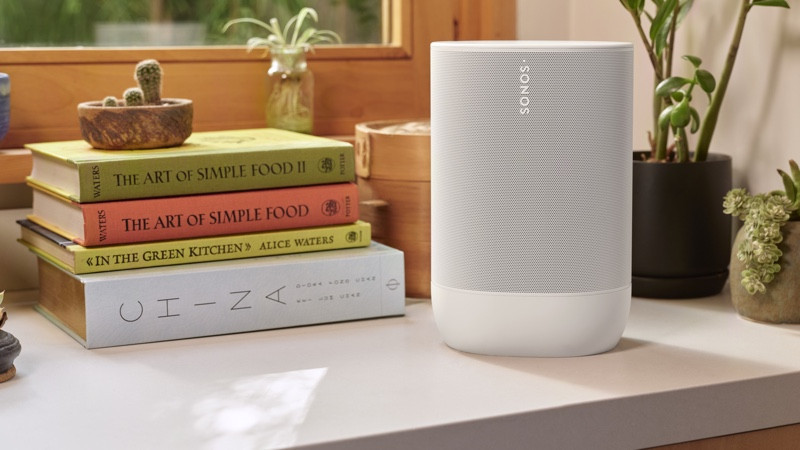
Sonos Move 2
Buy now: sonos.com | $449 / £449
In September 2023, Sonos took everything we loved about the Move and threw in a bunch of new features and went live with the Move 2.
Battery life is up from 10 hours on the original Move to an impressive 24 hours; and all that from a battery than can be removed and replaced.
However, it trumps the original Move on the Bluetooth front as, just like the Sonos Roam, it’s able to be on both Bluetooth and Wi-Fi mode at the same time.
- Check our full Sonos Move 2 review
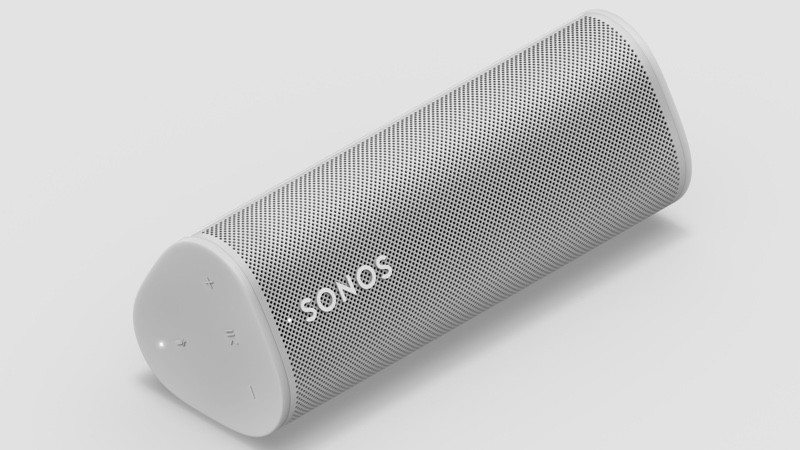
Sonos Roam / Roam SL
Buy now: Amazon, sonos.com | $179 / £179
The little brother to the heavy hitting Move duo, the Roam was revealed in early-2021 and is Sonos’ smallest and cheapest speaker so far.
The Roam is available as a smart speaker with voice assistants, or as a dumb speaker in the SL variant (which is $20 / £20 cheaper).
Like the Move, it’s capable of Bluetooth and Wi-Fi streaming and, on the former, it was Sonos’ most advanced Bluetooth speaker, as it can also beam a received BT stream around to other Sonos speakers on your network; something the Move 2 also now offers.
The Roam is a curved triangular speaker that weighs less than a pound and is waterproof enough that you can take it in the bathroom, or around the pool, without worrying about it breaking if it takes a dip.
It’s also Sonos’ most colorful speaker, with five different variants to choose from.
- Have a read of our full Sonos Roam review
- Portable showdown: Sonos Roam vs Sonos Move

Sonos Five
Buy now: sonos.com | $549 / £499
Technically, still the flagship bookshelf speaker, the Five is actually a highly-evolved version of Sonos’ first-ever speaker. It boasts six Class-D digital amplifiers, six dedicated speaker drivers, three tweeters and three mid-woofers.
The Five replaced the second-gen Play:5 and, like its predecessor, has a line-in on the back for CD players, turntables and the like, and also offers up a pair of Ethernet ports so it can act as a handy switch or extender for your wired devices.
It can sit in either portrait or landscape, as well, and comes in a choice of all-black or all-white.
Compared to the One and One SL, the Five offers a much fuller sound, with an improved mid-range especially – something that feels rather hollowed out on the other two.

Sonos Era 300
Buy now: sonos.com | $449 / £449
We said technically the flagship for the Five and that’s because, in 2023, the Sonos Era 300 went live, boasting a radical new look, which was designed from the ground up with spatial audio in mind.
Designed to essentially replace the Sonos Play:3, that hourglass form factor of the Era 300 allows for six class-D digital amplifiers working alongside four tweeters pinging off in all directions for Dolby Atmos action.
There’s also a pair of woofers to maximize the low-end output, which are angled left and right to support stereo playback.
The Era 300 is both a Bluetooth and a Wi-Fi (6E) speaker and it also supports line-in; although you will have to buy a separate adapter ($19 / £19) for 3.5mm aux in, as it’s a USB-C line in on the back.
- Read our full Sonos Era 300 review to learn more

Sonos Arc
Buy now: sonos.com | $899 / £899
The Sonos Arc went live in 2020, offering Dolby Atmos surround sound, HDMI connectivity (ARC or eARC) and 270-degree multi-directional sound from that curved grille.
Coming in matte black or white, it’s a step up from the hugely popular Sonos Beam, offering a dedicated TV speaker that isn’t just Atmos-equipped, but friendly with stereo and Dolby Digital 5.1, too.
Featuring 11 drivers in total – 8 elliptical woofers and 3 angled silk-dome tweeters – the Arc uses Sonos Trueplay software to make sure you get the optimum sound for your room and setup.
Whether your voice assistant of choice is Google Assistant or Alexa, the Sonos Arc has you covered, and it’s also an AirPlay 2 speaker, as well.
While the Arc itself is capable of a 5.0.2 surround sound stage, you can eliminate the virtual parts by adding dedicated rear speakers (any of the Sonos One range is usually the best bet) and a Sonos subwoofer – but more on that in a bit.
There is also a Costco-exclusive Sonos Arc SL, which ditches the voice assistants and will save you $50.
- Read our full Sonos Arc review

Sonos Beam (2nd-gen)
Buy now: Amazon, sonos.com | $449 / £449
The mid-level member of the Sonos smart soundbar gang, the Sonos Beam – which has been revamped for a 2nd-gen model – can, of course, be used as a regular Sonos speaker, but really it’s designed to beef up your TV’s audio – it connects via HDMI eARC and, like the Arc, has high-end audio like Dolby Atmos on offer.
The Sonos Beam 2 looks a heck of a lot like its predecessor, at least in terms of footprint and form factor. Like the original, it is modest in size, measuring just 26 inches long, 4 inches wide and 2.7 inches high.
Featuring five Class-D digital amplifiers, a single tweeter, three passive radiators and four elliptical midwoofers, it also boasts a five-mic array for voice control, which makes it easy for Alexa or the Google Assistant to hear you from a distance over whatever is being played through the speaker. AirPlay 2 is also on board.
- Read our full Sonos Beam 2 review
- Soundbar showdown: Sonos Beam vs Sonos Arc
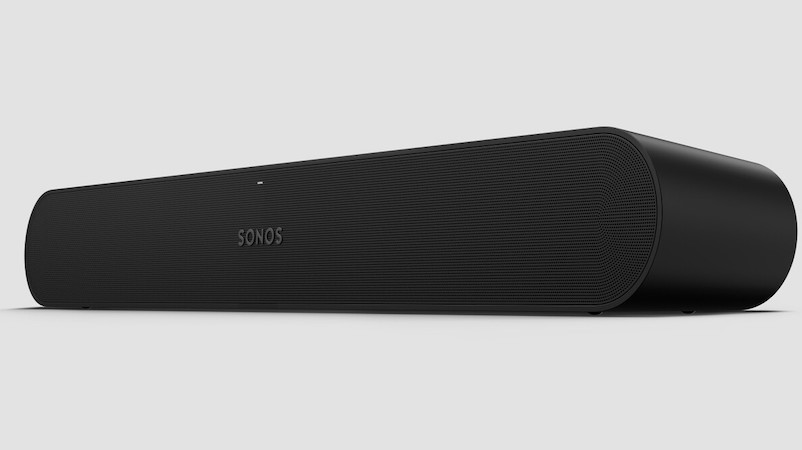
Sonos Ray
Buy now: sonos.com | $279 / £279
There’s now an even cheaper Sonos soundbar than the Beam: the Sonos Ray went live in mid-2022; Sonos’ most affordable TV speaker to date.
For those looking to get an extra boost from their TV’s sound, while at the same time adding a further arrow to their Sonos arsenal, the Ray is likely to be very tempting indeed, especially for those with TVs that lack an eARC HDMI for Dolby Atmos.
Unlike the Beam and the Arc, which offer Dolby Atmos through HDMI, there’s just optical audio on the Ray, there’s no HDMI in sight. That means you are limited to just Stereo PCM, Dolby Digital and DTS Digital Surround.
Another omission to keep the price tag down is the lack of a microphone for smart digital assistants like Google Assistant or Alexa, but we doubt that will be a deal breaker for many people.
What you will get is both AirPlay 2 and Spotify Connect compatibility and the usual array of Sonos soundbar features such as IR remote skills, Trueplay, Night Sound and Speech Clarity.
- Read our Sonos Ray review
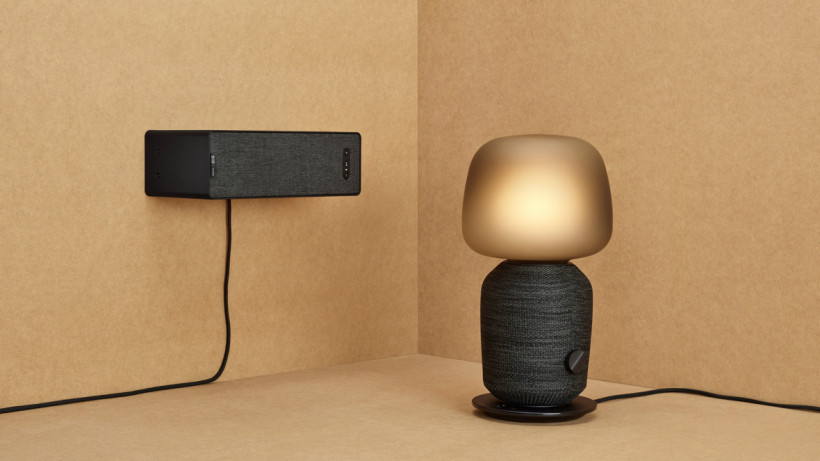
Sonos Ikea Symfonisk
Buy now: Ikea | From $99 / £99
Ok, so technically this is the cheapest way into the Sonos ecosystem, but that’s because these speakers are not actually built by Sonos.
Rather, Ikea’s Symfonisk speakers put Sonos sound tech inside Ikea-built furniture. It launched a few years back with a range of table lamps and bookshelf speakers; and we’ve since seen a Frame-shaped speaker launch, along with a 2nd-gen lamp (with a tweaked design) in some regions.
In mid-2021 Ikea introduced a third Symfonisk speaker to the mix… the intriguing Symfonisk Picture Frame WiFi speaker.
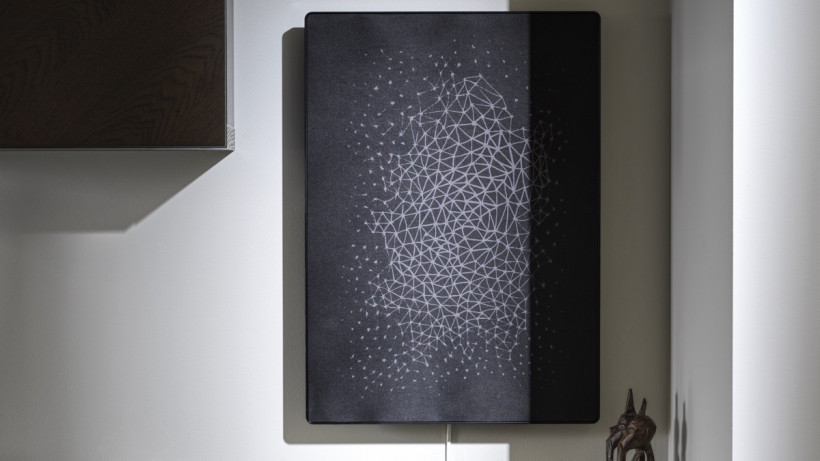
This Frame Symfonisk speaker is available with an array of interchangeable fronts, with the idea being you’ll find one that suits the design of your home.
The Symfonisk Picture Frame WiFi speaker is available from $199 / £179
- Read how the budget Sonos Ikea Symfonisk sounds in our review.
- And take a look at our full Sonos Ikea Symfonisk Picture Frame WiFi speaker review.

Sonos Sub (Gen-3)
Buy now: sonos.com | $749 / £749
The Arc and Beam both add brilliant sound improvements to your home cinema setup on their own, but they can also be teamed up with other Sonos speakers as part of a surround sound setup – and that’s where the Sub comes in.
Looking more or less exactly the same as the 2nd-gen model, the new Gen-3 Sub has had its innards revamped with increased memory and faster processing power.
However, Sonos’ subwoofer isn’t just for a TV surround setup; it’s also brilliant for adding bass to your music, and, again, you can just throw it into a group as per a regular speaker.
In 2022, Sonos unveiled its long-awaited affordable subwoofer, the Sub Mini; a cheaper alternative ($429 / £429) to the full size Sub.
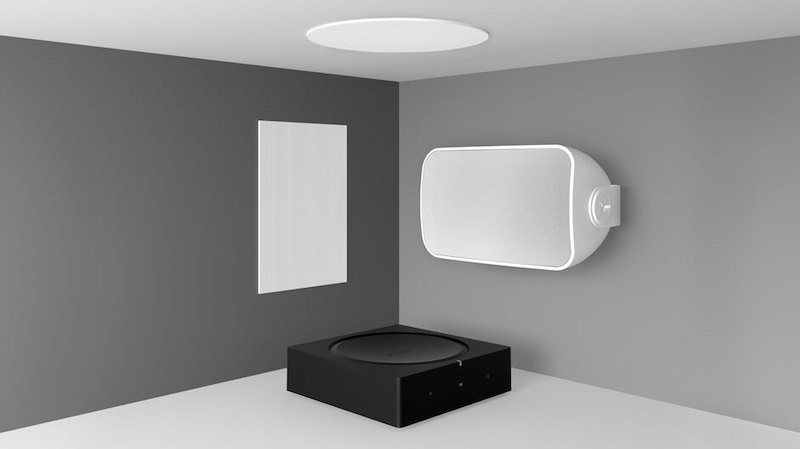
Sonos Architectural by Sonance
Buy now: sonos.com | From $649 / £599
Sonos also offers non-bookshelf speakers in the form of the Sonos Architectural by Sonance lineup, which includes in-wall, in-ceiling and outdoor speakers.
They will need to be hooked up to the Sonos Amp to work, which means that embracing this new range of Architectural Sonos isn’t cheap.
On top of the Sonos Amp, the Sonance line-up consists of the Sonos In-Wall, the Sonos In-Ceiling and the Sonos Outdoor.
The Sonos Amp auto-recognize and connect to the Sonance wall speakers, and you’ll be able to tune them via TruePlay.
The extras and Sonos components
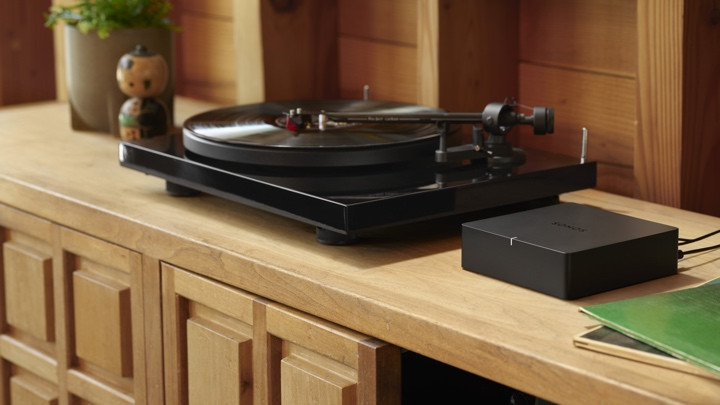
That’s your lot when it comes to audio output, but there are some additional accessories to make your Sonos system harder, better, faster, stronger.
Sonos Port
Buy now: sonos.com | $449 / £399
Sonos’ Port is an update to the older Connect systems and will allow you to hook up your old speakers to your Sonos system, rendering what was once dumb very much smart.
Brilliantly, it also includes a 12V trigger, meaning it can turn those devices on and off without you needing to get up and do it yourself.
Sonos Amp
Buy now: sonos.com | $699 / £699
A replacement for the Connect:Amp, the Amp is twice as powerful as its predecessor, coming with support for up to four speakers with 125 watts per channel. It also supports AirPlay 2.
Sonos TV surround sound system
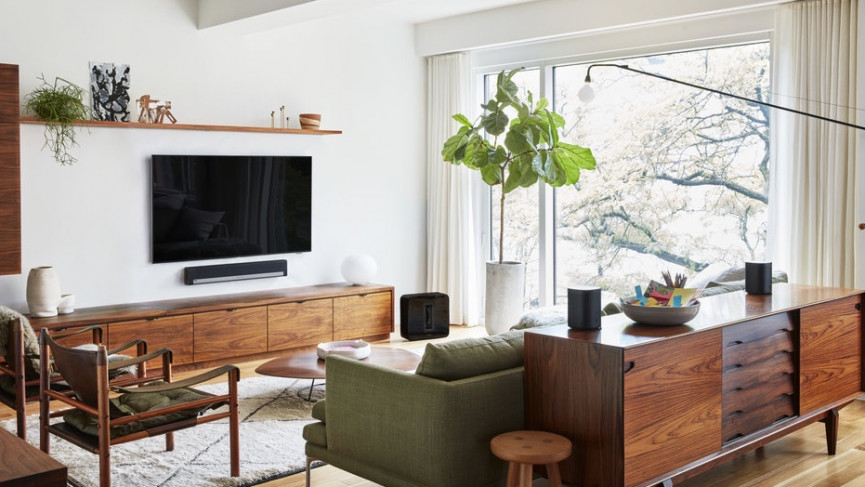
As well as being able to pair up your Sonos speakers for stereo sound, and the multi-room synced music, you can also create a dedicated TV surround system from within the Sonos app.
It used to be limited to 5.1 but you can now create a Sonos 7.1 system thanks to the launch of the Era 300.
You’ll need a mix of some key ingredients to get started – one of the Sonos TV soundbars: the Beam, Ray or the Arc, some rear speakers (Ones and Symfonisk bookshelves are a great option) and also a Sub.
A soundbar and the Sub is a 3.1 system right there and Sonos actually sells 3.1 bundles with surround sound setups from $677 / £637 – that price is for a Ray-based system, you’ll pay a bit more to get an Arc or Beam involved.
To get to 5.1 you obviously need to add a couple of rear speakers and you can do this with either a pair of Ones, One SLs or even a pair of Ikea speakers. Technically, you could throw some Sonos Fives at the back, but that would be some level of overkill.
You can also, if you want to really go all out, also throw a couple of Era 300s together as the rear speakers of a true multi-channel 7.1.4 Dolby Atmos experience in a surround sound setup, when paired with an Arc and some Sonos Subs.
Sonos actually sells this high-end bundle for $2,471 / £2,466.
How does Sonos work?
Sonos started life way back in 2005, as a remote control (with a display) and an amplifying box – the ZP100 – that effectively made dumb speakers connected.
The ZP100 had Ethernet and Wi-Fi connectivity and, using the controller, you could stream your locally stored digital music, as well as tap into some internet radio services.
Nowadays, Sonos is effectively a collection of connected speakers that team up with an app – mobile or desktop – to let you stream your music from a huge array of sources. You can have just one Sonos speaker in your setup but the fun starts when you begin to team them up.
Setting up and Sonos Trueplay

Whether you’re setting up a solo Sonos speaker, or connecting up a bunch of them (you can have a maximum of 32, by the way), you’ll start by creating a Sonos account.
On a PC or mobile device, operating on your home’s Wi-Fi – the same Wi-Fi that your Sonos system will use (to begin with, at least) – get the Sonos app and create an account. You’re then walked through the process of adding speakers to the mix.
The best way to do this is using an iOS device so you can make use of Sonos’ Trueplay tech – essentially a calibration tool that uses your iPhone or iPad’s microphone to measure sound reflections off your room’s walls to decipher room size, layout, furniture, speaker placement and any other acoustic factors that impact on sound quality.
It takes a few minutes of you waving your iOS device around the room and then the app adjusts the speaker’s woofer and tweeter for the best sound.
Sure, the HomePod can do all this without you walking around a room with a phone in your hand, but it does mean the best possible sound from each speaker.
Sonos multi-room audio
Once you’ve gone through the process of adding all of your Sonos speakers, naming them and assigning rooms (and creating dedicated pairs of stereo-speakers, if you wish), you’ll have a multi-room audio setup at your fingertips.
You can choose to play back different music sources in different rooms, or you can group speakers so they play back the same source, at the exact same time, perfectly in sync. Once you create groupings, your Sonos system will remember these until you ungroup them – it really is as simple as checking or unchecking a box in the app. You can have as many groups set up as you like, but a speaker can only be in one group at a time.
These groups also stay intact when driving Sonos from another source. For example, you can associate Amazon Echo devices with Sonos speakers, creating groups where the Sonos speakers are the default music playback for a command heard by your Echo devices. Same with Google Assistant now too.
Bluetooth, Wi-Fi, Boost setup and more
Sonos speakers were historically not Bluetooth speakers but all of that has changed in the past couple of years with the launch of the Roam, Move and Era speakers.
Bluetooth aside, all Sonos speakers operate on the 2.4GHz Wi-Fi spectrum. That means a larger range, uncompressed audio and better control around your whole house. It also means that the speakers themselves are streaming the audio, rather than simply relaying what your phone sends over to them.
When you first set up a Sonos speaker, though, by default it just runs on your home Wi-Fi network – and the speakers need to have a good signal to your router to operate without lag or drops.
But you can improve things by creating a Boost setup (sometimes referred to as ‘SonosNet’). What this means is a separate 2.4GHz mesh network that operates away from your home Wi-Fi, while at the same time still using your router’s connection to the web for its internet-based sources.
The easiest way to do this, if possible, is to connect one of your Sonos speakers – any one will do – to your router using Ethernet. This will make your Sonos speaker a hub for the Boost network.
However, the best setup – albeit at an extra cost – is to add a Sonos Boost (£99) to the mix; a dedicated wireless booster that broadcasts 360-degree signals around your house.
Recent advancements in Wi-Fi tech has made a SonosNet system somewhat redundant though, both the Era 100 and 300 won’t play a part in SonosNet, for example, because they don’t really have to thanks to their Wi-Fi 6 skills and home mesh Wi-Fi systems now common place.
What can you play on Sonos?
When Sonos started life it was essentially a streamer for your locally stored digital music – think MP3s stored on a NAS drive or within your iTunes library. And while the system is still capable of that, it now offers a whole lot more.
All of the major streaming services are on offer through Sonos speakers (you simply need to sync up your accounts in the app). The list includes Spotify, Apple Music, Amazon Music, Deezer, Soundcloud, Google Play Music, Qobuz and Tidal.
In terms of radio playback, you can tap into the millions of digital stations from around the world through TuneIn or SiriusXM – or even make use of the newly launched Sonos Radio service.
Spatial audio is the ‘big thing’ in music right now – 80 of the top 100 Billboard tracks in the US are available in Dolby Atmos (one of the leading spatial audio technologies).
You can get spatial audio tracks streaming on Sonos using Amazon Music Unlimited and also Apple Music also now offers spatial audio to Sonos users.
Finally, you can also use a Sonos device with a line-in option, or a Sonos TV speaker with digital optical audio, to stream pretty much anything you like around your house – whether that be sound from your ancient hi-fi cassette deck, the audio from a TV broadcast or even your record player’s vinyl.
One piece of advice – if you are planning on streaming anything other than compressed digital music (i.e internet radio, stored MP3s, Spotify and the like), then you’ll want a Boost setup to avoid choppy playback.

What is Sonos S2?
In June 2020, the S1 (old) and S2 (new) systems went live – the biggest shake-up to the Sonos system to date.
At the start of 2020, Sonos announced that it would stop updating ‘legacy products’. This list included original Zone Players, first-gen Connect and Connect:Amp, the first-generation Play:5, the CR200 and the Sonos Bridge.
Sonos S2 is not only the name of a new app, it’s also a new OS for your non-legacy Sonos speakers.
The new app looks pretty slick and there are some sweet new software features for upgraders, such as preset groupings that you can use for speakers at certain times of day, or for events – think ‘Good morning’, ‘Party’ and so on.
But the biggest deal is perhaps that Sonos is promising that S2 will “enable higher resolution audio technologies for music and home theater”. We’re hoping that means high-resolution audio for the likes of Tidal and Amazon Music HD. The first signs of this are the Dolby Atmos features of the new Sonos Arc.
Sonos S1, which launched alongside the new S2 experience, is basically Sonos as it is was.
Do old Sonos speakers still work?
As we’ve just noted, Sonos has stopped updating its older, ‘legacy’ products in the last couple of years.
If you’ve got any of these older Sonos devices, you still have the option of using your Sonos setup as is; you just won’t receive software updates and new features as they launch.
However, if your Sonos system comprises even just one of those legacy devices and a bunch of the newer speakers, you’ll have to ditch your old one or condemn your new speakers to the same no-more-updates fate.
You can split your system apart – which is a non-runner for most Sonos setups – or simply let your old Sonos speakers die. You can also upgrade your old Sonos kit using a 30% credit trade-in program.
Sonos in the smart home – Alexa, Google Assistant and more
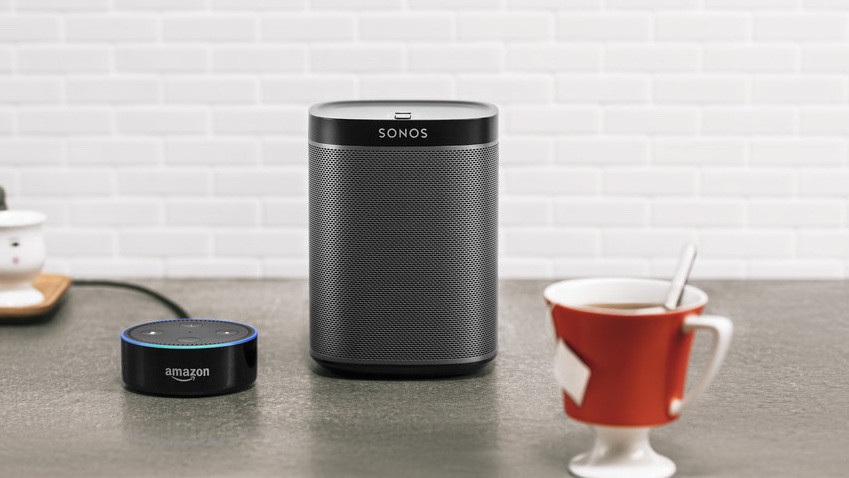
As we said in the intro, Sonos is getting better on the smart home front – its Works with Sonos program has partners like Wink, Lutron, Logitech and Yonomi on board, making things like automation recipes possible.
Alexa is also friendly with Sonos – Amazon’s assistant lives inside a range of Sonos speakers – as did the Google Assistant, although not recently though (Sonos and Google had a very public legal spat in the past few years).
Also, via the Sonos Skill, any Alexa or Google Home speaker can control your existing Sonos speakers. In essence, that means you can add voice control for as little as $30 / £30 using an Echo Dot, and totally transform your setup.
Check out our guide to Sonos and Alexa to find out exactly what you can and can’t do – but remember, you’ll need a Sonos One with Alexa on board to actually control things in your smart home.
You can also now associate Amazon Echo devices with Sonos speakers using the Alexa app; creating groups where the Sonos speakers are the default playback for a command heard. Sonos has also fixed the problem of its speakers lowering the volume every time you talk to Alexa on your Echo, but it’s a little tricky – check out our guide on how to fix it.
Sonos also has its own voice assistant now too. Voice Control is solely about accessing your music, so isn’t looking to compete with Alexa or Google for smart home controls.
It supports Amazon Music, Apple Music, Pandora, Deezer and Sonos Radio media controls. Spotify is not supported at the moment.
You can use both Sonos Voice Control and Alexa at the same time, on the same speaker – but not Sonos and Google Assistant, which is… odd.
All requests are processed locally rather than in in the cloud to provide complete privacy, and hopefully reach customers who’ve previously held out due to these concerns.
Sonos and AirPlay 2
Great news – Apple’s AirPlay 2 plays nicely with your Sonos system. Sort of. Some of it at least. The likes of the Sonos One, One SL, Sonos Move, Era 100, Era 300, Ray, Roam, Five, Beam, the second-gen Play:5 and the Playbase are all AirPlay 2-enabled speakers and can sync up with the HomePod and other AirPlay 2 speakers.
Older Sonos speakers – but you can include them by pre-grouping them with one of the speakers listed above in advance. That’s because the new Sonos speakers will act as “hubs” while the old ones will just stream the music or audio they need to.
Sonos streaming vinyl from your record player

We’ve spoken about adding a Port, Amp, Connect or Connect:AMP to the mix in order to bring your non-connected audio equipment into your Sonos groups, and one of the most common requests is for people to stream their vinyl record collections over their Sonos speakers.
The good news is that it’s not only possible but also easy to set up. You can either use a Port or Amp as stated – using the line-in port – or just go straight into a Five’s line-in port, or into a Era 300 via an adapter.
Simply group up speakers to whatever Sonos device your record player is connected to, click play on the Line-in source and you’re away.
Sonos and IFTTT
IFTTT compatibility lets Sonos users integrate their speakers into the wider smart home in a number of interesting ways. For example, you could add a recipe that starts Sonos playing your favorite song when your smart lock registers you arriving home, or a recipe that stops all music playing when your Nest Protect alarm detects smoke.
IFTTT has control over the basic playback functions: pause/resume/next/previous, and the volume controls. The integration is in beta right now, and Sonos says it will be adding more functionality as the beta develops.



